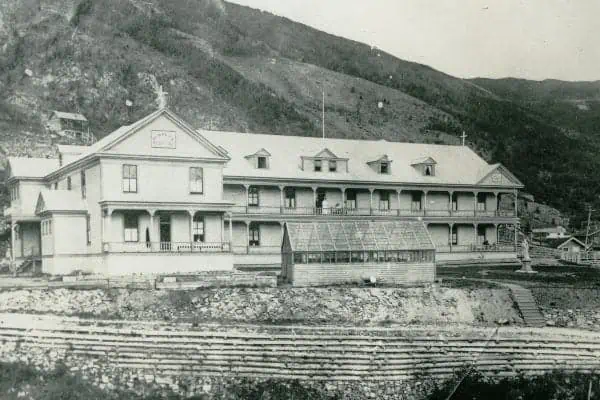The most recent exhibition at Dawson’s ODD Gallery is nothing if not seasonal for its subject is the northern lights, also called aurora borealis, the light display named jointly after the Roman god of the dawn, Aurora, and the Greek god of the north wind, Boreas.
Nicole Liao’s installation is called Against the Day, which takes its name from a passage in the American novelist Thomas Pynchon’s book of the same name.
In that passage Pynchon describes “an international race to measure and map most accurately the field-coefficients at each point of that mysterious mathematical lattice-work, which was by then known to surround the Earth.” In the novel, this effort is taking place between the 1880s and the Balkan Wars that preceded World War I.
As the exhibit pamphlet notes, “The aurora borealis is in fact a geomagnetic storm. The phosphorescent colours are the result of speeding, high energy particles that travel from the sun and collide with the gases of the earth’s atmosphere.”
For this exhibition, Liao has gone further than Pynchon’s description and put together what she describes as “a photo and video installation composed of found scientific drawings, photographs, models and footage based on early records of auroral research and documented nuclear bomb tests in outer space.”
The video portion of the exhibit includes footage of high altitude detonations of nuclear bombs, exploded in 1962 in an exercise known as Starfish Prime. Shown side by side with footage from the National Film Board documentary called “The Northern Lights,” it is clear that the visual similarities are quite startling.
Another part of the video display juxtaposes a view of an astronaut in a cramped space capsule orbiting the earth, while the matching picture shows land bound humans, bundled in Arctic gear, manning cameras to study the skies.
Still pictures show some of the devices used to attempt to measure the northern lights, to show their extent and determine just how high in the atmosphere they occur. Other photographs show wire models used in the study of the lights, and diagrams – with equations – used in the trigonometric attempts.
In her own notes, Liao writes “The exhibit seeks to understand the aurora borealis in terms of its relation to the science of optics and electromagnetic forces; incidentally, this complex physical and chemical relationship between particles, radiation and light in the aurora is also the nature of the photograph.”
Paired with a light show, this creates a sensation of doubling, which “makes the aurora borealis and its sinister twin ideal subjects with which to explore the technology of the photograph and the moving image. Like a science fiction film, the double begins to take on an apocalyptic life of its own, independent of time and space, returning again and again to haunt the present.”
The exhibit is complex. You need to spend some time watching the video clips and it’s essential to use the two pages of notes in order to understand the 15 elements of the presentation.
Against the Day will be on display until February 27.




